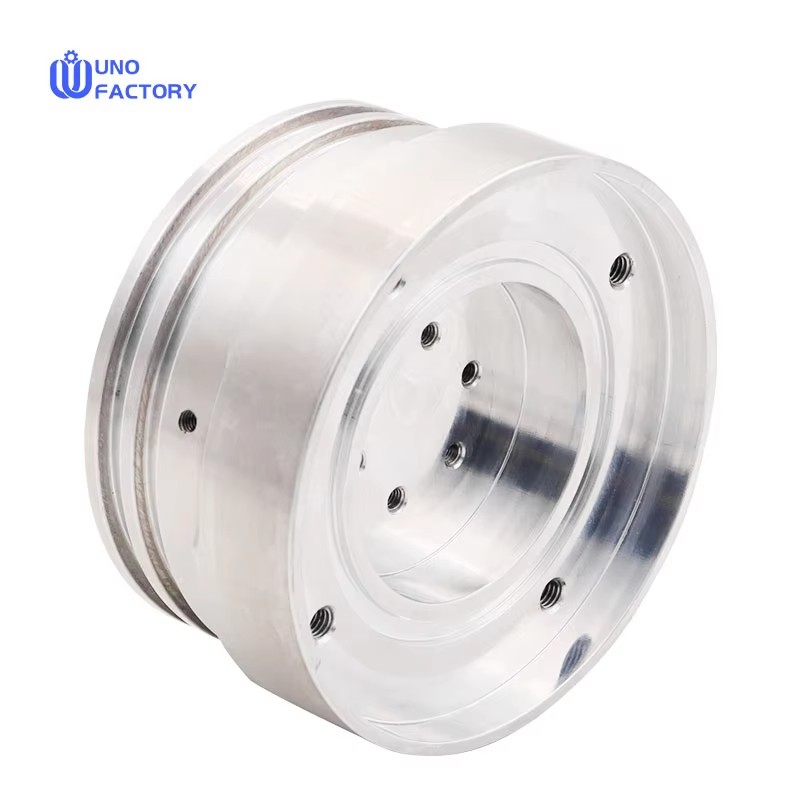Time to read: 6 min

Evolution and Impact of CNC Machining
CNC (Computer Numerical Control) machining has transformed the manufacturing sector through its ability to deliver high-precision components with remarkable consistency. This advanced technology has not only improved efficiency but also opened doors to designing complex parts that were once considered impossible.
Understanding the Essence of CNC Machining
CNC machining is a subtractive manufacturing technique where material is removed from a workpiece by a computer-controlled cutting tool. This digital manufacturing process translates CAD designs into tangible, high-precision components and shapes.
Historical Progression of CNC Machining
The inception of CNC machining can be traced back to the post-World War II era, driven by the need for efficient and precise machining methods. The technology has since evolved through four distinct phases, each marked by significant advancements:
- 1952 – 1958: Inception: The initial development of CNC machinery, focusing on automating machining processes.
- 1967 – 1972: Recognition: The industry began to recognize the potential of CNC in enhancing manufacturing capabilities.
- 1976 - 1989: Integration of CAD/CAM: The integration of design and manufacturing software solidified CNC's place in the industry.
- Present Era: Industry 4.0 and Beyond: Modern CNC machines are a cornerstone of smart factories, offering automated and precise manufacturing solutions.
Diversity in CNC Machinery
CNC machines are designed to handle a variety of complex tasks with ease. The choice of CNC machinery depends on the movement capabilities of the cutting tool and workpiece:
- 3-Axis CNC Machines: These machines operate within the Cartesian coordinate system, offering precision in milling and turning operations.
- 4-Axis CNC Machines: An advancement over 3-axis machines, allowing for additional rotation of the workpiece along the x-axis.
- 5-Axis CNC Machines: The most versatile, providing complex shape manufacturing capabilities with five degrees of freedom.
Advantages of Embracing CNC Machining
CNC machining stands out due to its cost-effectiveness, suitability for prototyping, and the ability to handle complex geometries with ease. The precision and accuracy achievable with CNC machining are unparalleled, making it ideal for a wide range of applications.
Challenges and Limitations
Despite its many benefits, CNC machining does present some challenges, including high initial capital costs and the need for specialized jigs and fixtures for certain designs. However, these limitations can be mitigated with careful planning and the right partnerships.
Design Considerations for Optimal CNC Machining
To fully leverage the capabilities of CNC machinery, designers must consider several factors, including tool capabilities, workpiece shape, and material selection. Optimizing designs for CNC machining involves simplifying geometries, maintaining reasonable tolerances, and avoiding complex features where possible.
Material Options and Surface Finishes
The versatility of CNC machining is further highlighted by its compatibility with a wide range of materials, from metals like aluminum and stainless steel to plastics such as ABS and nylon. Surface finishing options, including anodizing and powder coating, enhance both the aesthetic appeal and durability of machined parts.
Applications of CNC Machining Across Industries
CNC machining's precision and flexibility make it a critical technology in various industries, including automotive, aerospace, electronics, and industrial manufacturing. Its ability to produce complex and high-precision components has solidified its role in these sectors.
Strategies for Cost-Effective CNC Machining
To maximize the value of CNC machining, businesses can focus on material selection, design simplification, and leveraging economies of scale. Outsourcing to specialized CNC machining services, like those offered in China, can also provide cost benefits and access to advanced manufacturing technologies.
CNC Machining in China: A Global Manufacturing Hub
China's emergence as a global manufacturing powerhouse has been bolstered by its advanced CNC machining capabilities. The country's low material and labor costs, combined with high-quality production standards, make it an attractive option for businesses looking to outsource their CNC machining needs.
Get Started with CNC Machining
Embarking on a CNC machining project has never been easier. With digital manufacturing platforms, businesses can upload CAD files, specify requirements, and receive instant quotations, all online. This streamlined process ensures convenience and control, allowing businesses to focus on innovation and growth.




